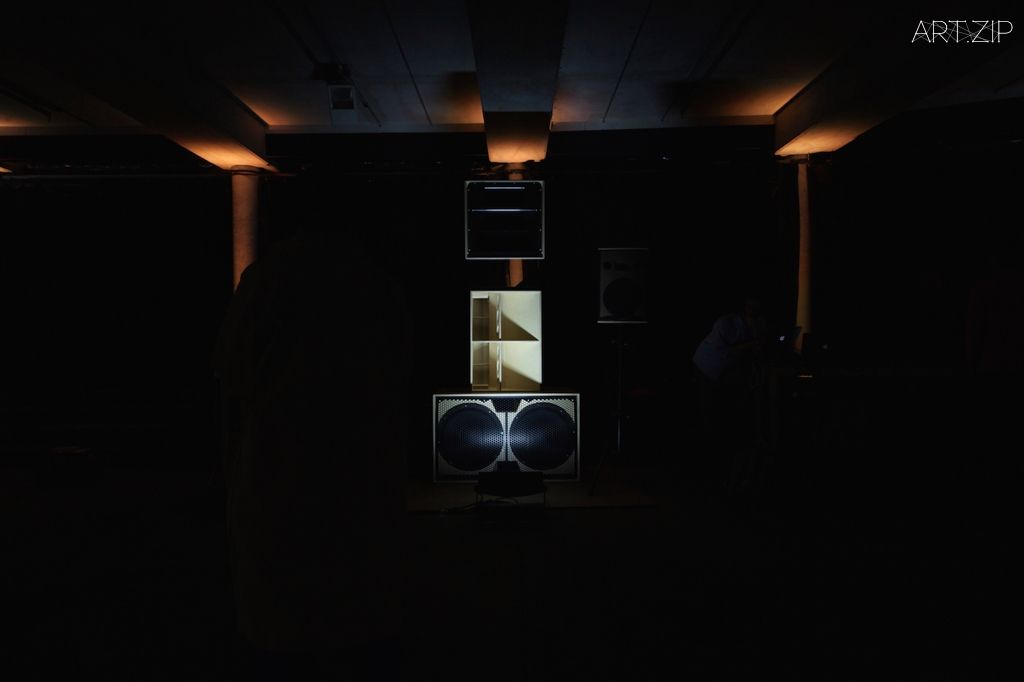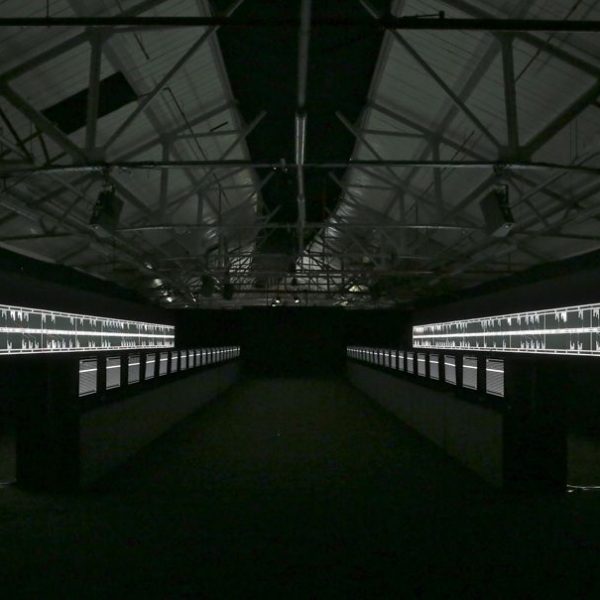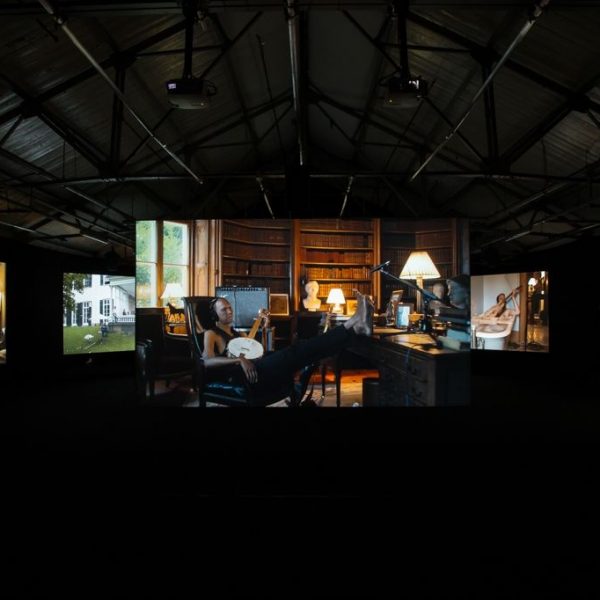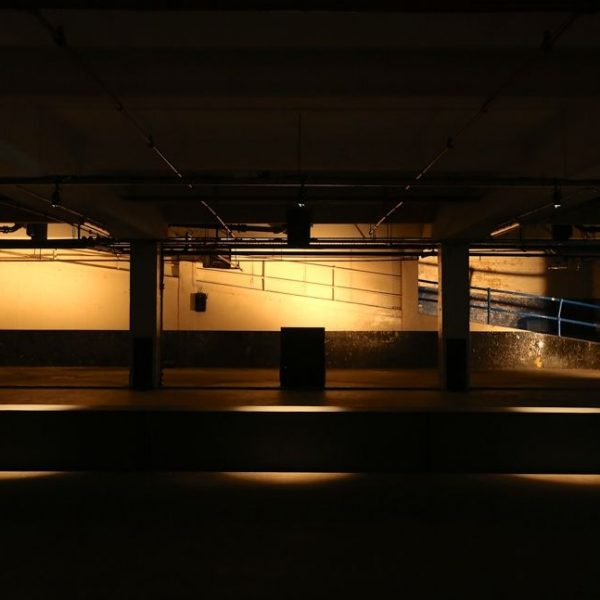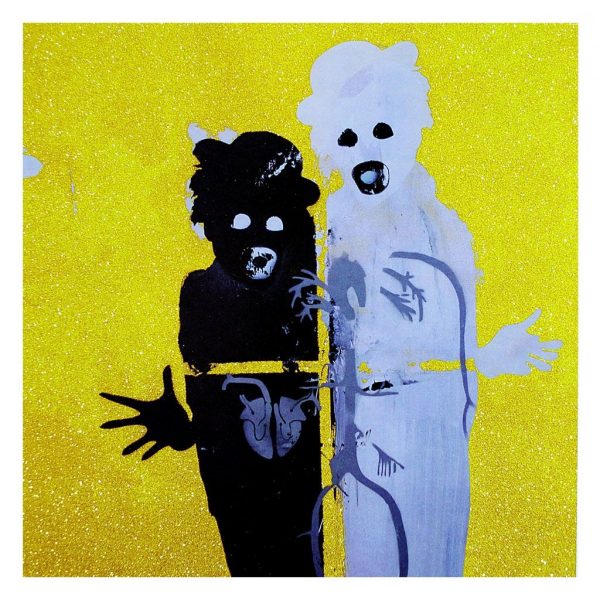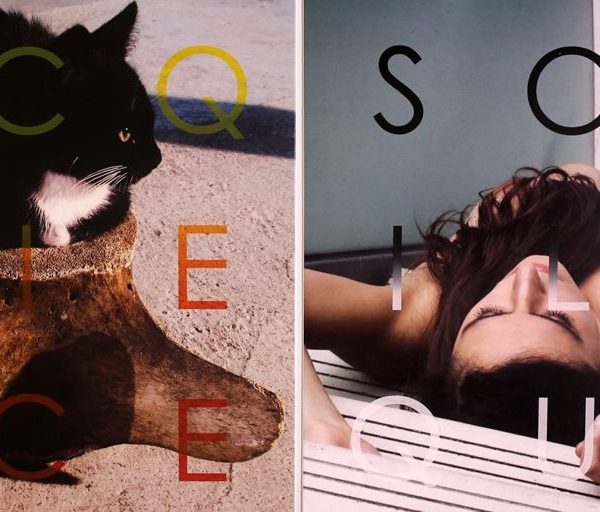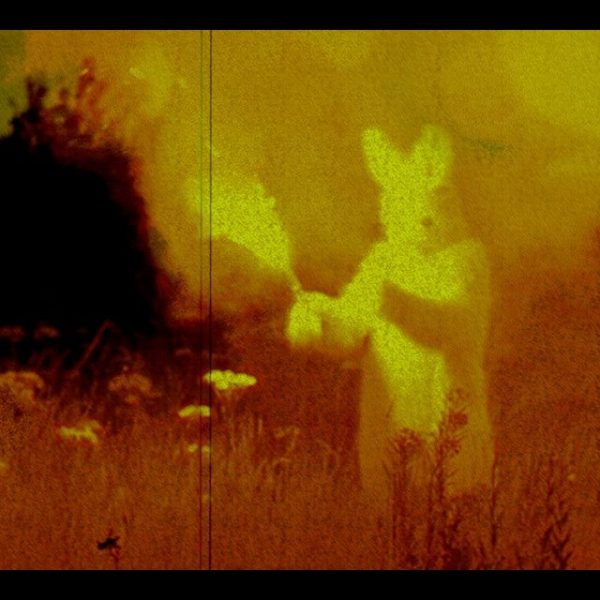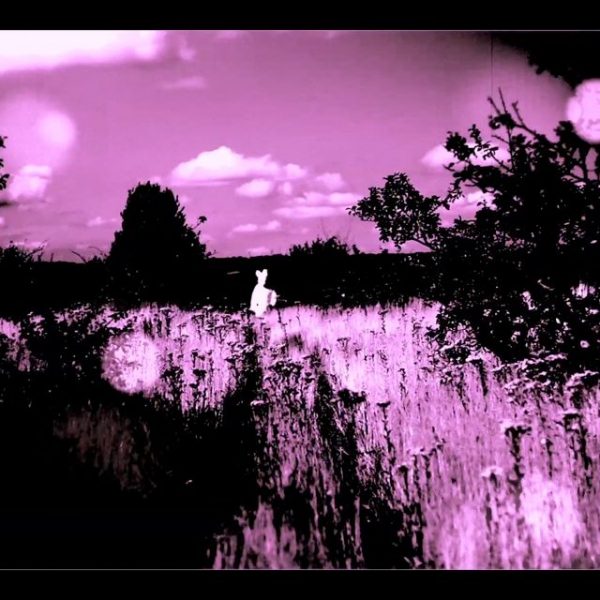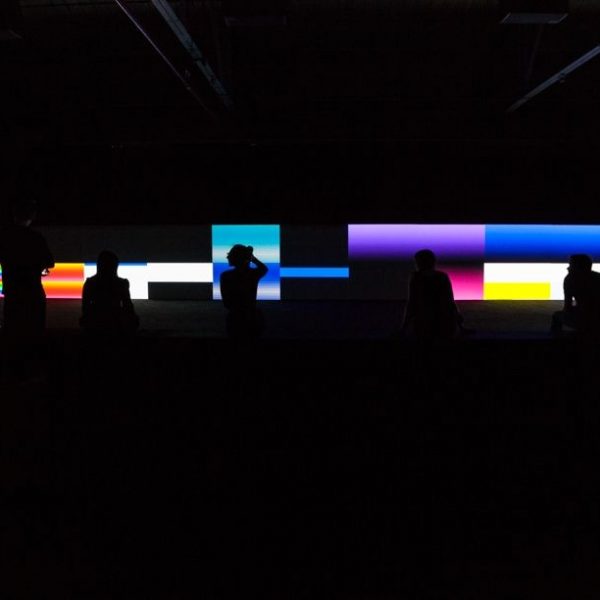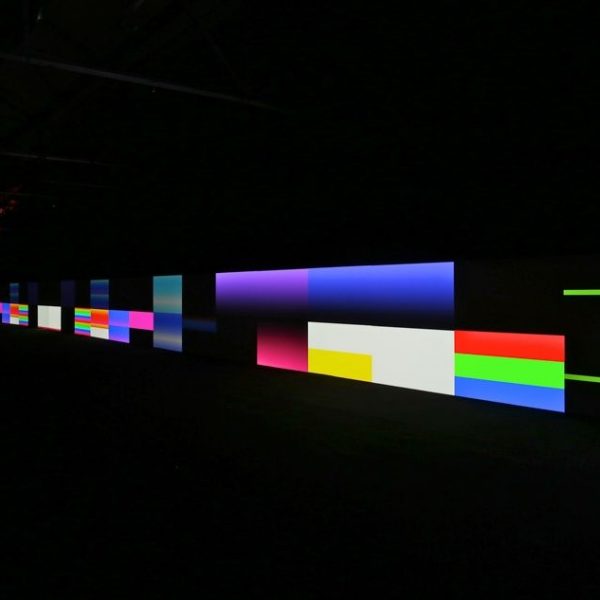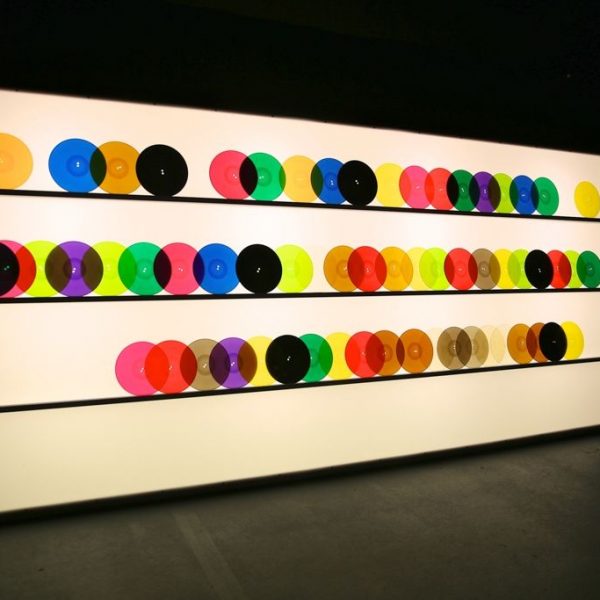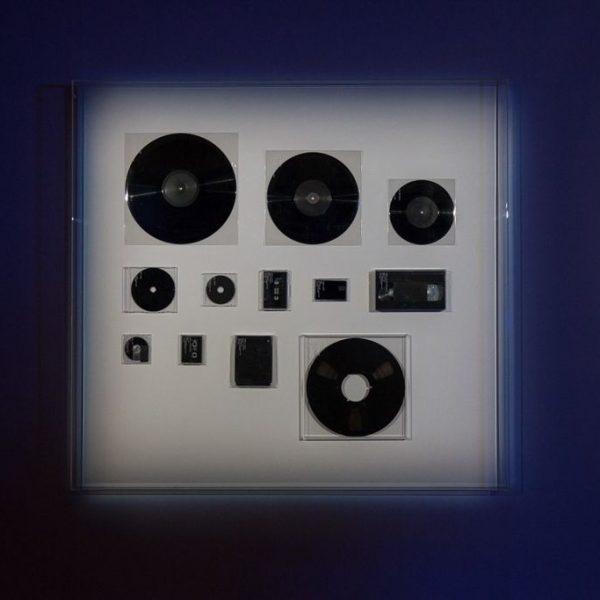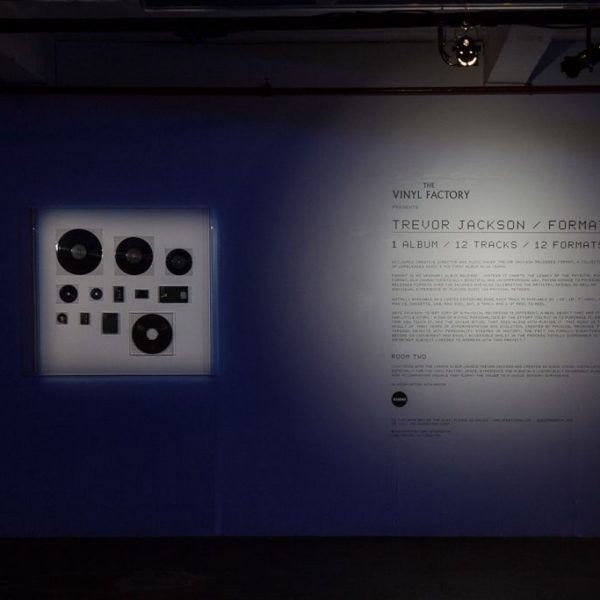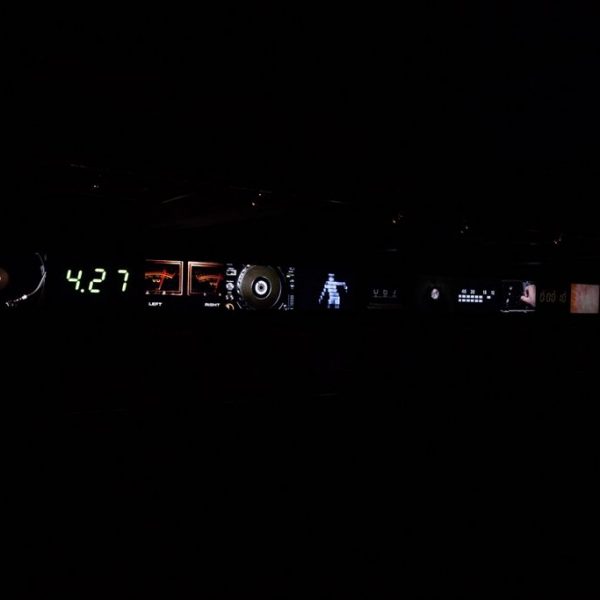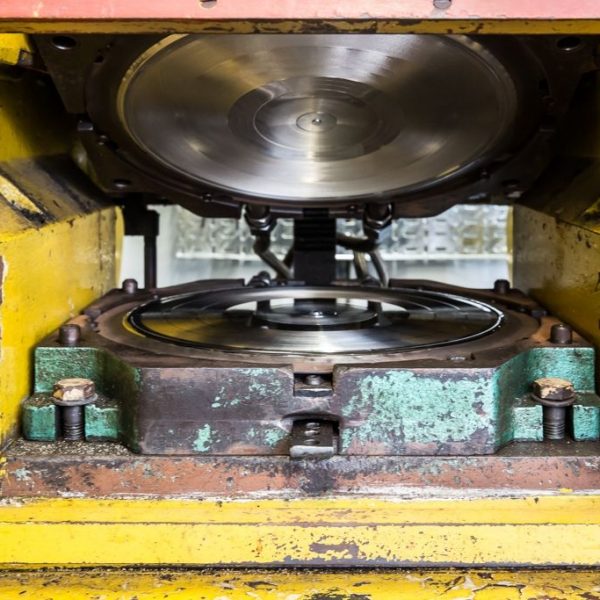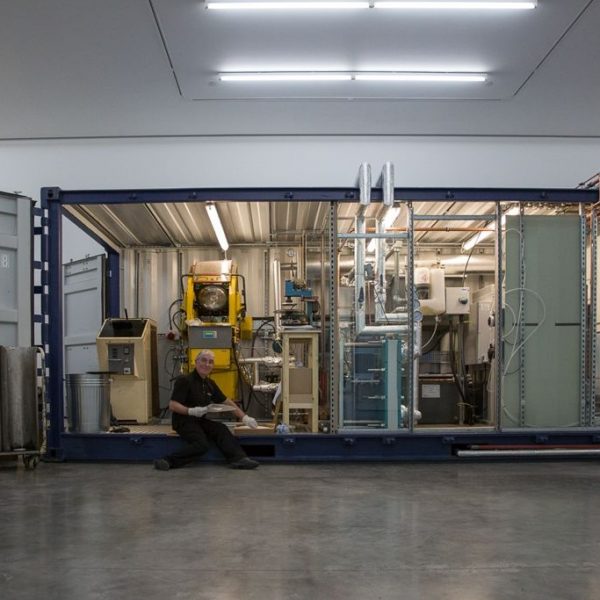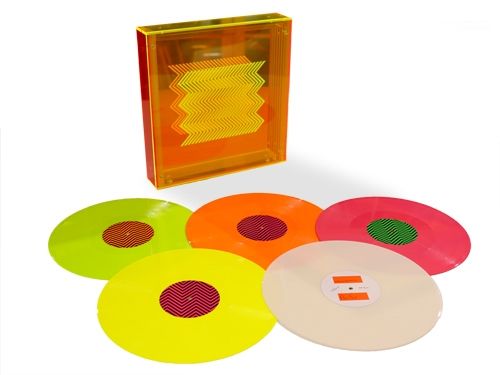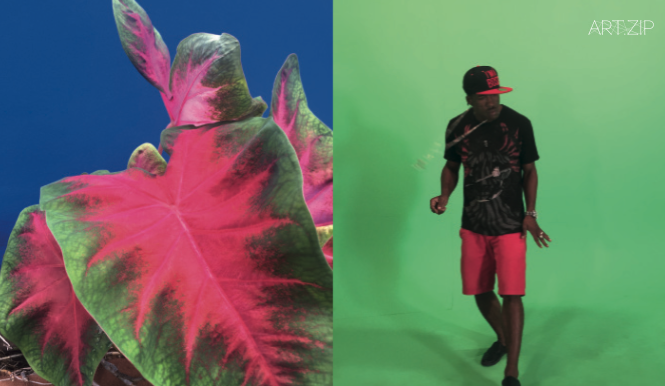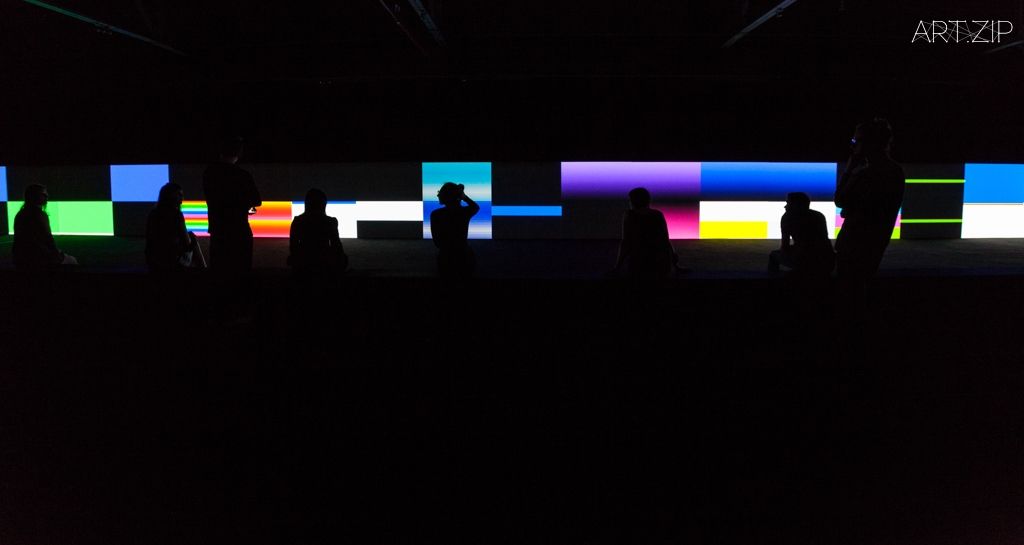
Interview with Sean Bidder, Creative Director of Vinyl Factory
專訪Vinyl Factory創意總監肖恩·比德.
Interviewed and text by 採訪及撰文 x Ke Qiwen 柯淇雯
Edited by 編輯 x Michelle Yu 余小悅, Nicolas Anderson
The British pop industry only truly started with the Beatles, then we had a proliferation of recording studios, music managers, bands and the whole industry evolved from that point. The hub of it was EMI, the primary manufacturing site in the UK, and Abbey Road Studios.
By the year 2000, most people were no longer optimistic about the future of vinyl, whereas the Vinyl Factory team still believed in it. Through a conversation with the Creative Director Sean Bidder, we will see that the Vinyl Factory team continues to make a solid living promoting this classic format into the digital era.
披頭士樂隊(The Beatles)可以說是英國流行樂曲的開端,當時隨處可見錄音棚、音樂經理人和樂隊,其中最鼎鼎大名的就屬EMI唱片製造工廠和艾比路錄音室(Abbey Road Studios)了。但到了2000年,當大多數人不再看好黑膠唱片的發展時,Vinyl Factory卻仍然堅信它有未來。通過與Vinyl Factory創意總監肖恩·比德(Sean Bidder)的對話,他讓我們了解到這個有著百年歷史的經典格式在數字化時代下的成功蛻變。
ART.ZIP: Would you please introduce yourself? Your background and how you started working at the Vinyl Factory?
SB: My initial background was in publishing, I edited music and art magazines. Now, I am the creative director of the Vinyl Factory and that means that I am lucky enough to oversee all the creative aspects of what we do. Primarily that involves working directly with the musicians and artists to create both large-scale exhibition events and also to release records on vinyl and also on digital. It also encompasses everything from a single very specific project to a mainstream album release.
Vinyl Factory was started in 2000 with the acquisition of the old EMI factory, which was once the cornerstone of the British music industry. When I joined there was a lot of pessimism about the future of vinyl in the music industry, people thought it wouldn’t work. However, we thought at the end of the day there would be two formats left, vinyl and digital, because, as a physical format nothing is better than vinyl. You’ll listen to digital but you buy the vinyl. It is always going to be a mass product versus something craft led, a collectible item. No matter how small the audience is, it will be an audience that is loyal and faithful, excited and passionate and from that you have an opportunity to build.
Moreover with music, music is by its very nature international, it is a language of its own. For us, we had this incredible opportunity; we had this heritage, this history, this craft that was unique to the plant and the machinery. In the 60’s and 70’s a lot of time, money and energy was spent developing that. We also had the incredible heritage of the records that were made there, from The Beatles to The Sex Pistols and Pink Floyd. For us we wanted to really engage with what a record company was at that period of time, which was a creative manufacturing unit. To work with musicians, to enable their music to be made and then sold, not what it became which was more marketing, distant from the actual music. It was making the music, recording the music, mixing the music, and releasing the music, that was the primary function. That is what I wanted to engage.
ART.ZIP: 能跟我們分享一下您的個人經歷嗎?您是怎樣加入Vinyl Factory的呢?
SB: 我過去的工作與出版有關,負責編輯藝術和音樂類的雜誌。目前,我在Vinyl Factory擔任創意總監,負責一切和創意有關的工作。主要就是與音樂家、藝術家一起籌備大型展覽項目,發行黑膠唱片,也發行數碼格式。我會參與某些特別的訂製項目,也會負責主流路線的專輯製作。
Vinyl Factory成立於2000年,當時收購了英國音樂產業曾經的巨頭EMI。在我加入那會兒,許多人都對黑膠產業的未來不抱樂觀的態度。但是我們認為在優勝劣汰中,音樂格式最終存活下來的有兩種——黑膠與數碼。沒有比黑膠唱片更棒的實體格式了。你或許會聽數碼格式的音樂,但你會買黑膠唱片。總是有大規模生產的商品和具有收藏價值的工藝產品的抗衡。不論受眾群是多小,總是有那樣一群人是黑膠唱片的忠實粉絲,這就是我們的立足點。
再說音樂,它本身就是國際化的,擁有自己的語言。Vinyl Factory有得天獨厚的資源:我們繼承了黑膠的傳統,承載了黑膠的歷史,也擁有製作黑膠唱片這樣獨特的工藝。在上世紀六、七十年代,人們投入了大把金錢、時間和精力來發展這個產業。我們還珍藏當年的經典黑膠唱片,像著名披頭士樂隊(The Beatles)、性手槍樂隊(The Sex Pistols)、平克·弗洛伊德(Pink Floyd)等。我們真的很希望能向黑膠的黃金時代看齊,成為生產創意的機構——和音樂家一起製作、售賣唱片,堅持最純粹的音樂創作,不會為了迎合市場而去生產。音樂創作、唱片錄製、音樂編輯、唱片發佈這些都是首要的,這些也是我想參與的。
ART.ZIP: You mentioned that in the digital age, the Vinyl Factory has expanded to a number of areas, could you just elaborate on what the main structure of the Vinyl Factory is now and how has the Vinyl Factory changed since it was established?
SB: With the Vinyl Factory Group, the first thing that happened was the purchase of the pressing plant, which was the core, when I joined my initial role was to set up a magazine FACT which was initially based around music and vinyl. It was a physical magazine for some time and then grew to a digital platform. With physical you can only make so many copies and then you have to get them to people, it becomes its own thing, whereas digital is worldwide straight away. The third thing we did was to open a record shop called Phonica and so our model was to have the various different aspects of what we felt was core to vinyl culture and the passion for music beyond the mainstream, within our group. To have a pressing factory gives you a lot of flexibility in how you work, to have a record shop gives you the opportunity to engage with people, to have a magazine gives you a platform to talk about the culture, the music and the vinyl that is coming out.
We then also had access to these incredible spaces, so that we could bring some of what we were doing with a record label and some of what we were doing with the record shop and the pressing plant to the public. We could work with some of the artists on the label to do exhibitions and events, and engage with people in another way. We understood that the audience who would buy the records was a small part of the overall audience who would be interested in our ideas. The vision for us was a little like the Bauhaus model, to have the means of making things within your own grasp, so that it allows you to experiment, that is the main thing. In terms of a music industry model we wanted to have our own label, make our own records, work directly with musicians and artists and be able to create a structure that allowed us to do all that and sell records directly to people who wanted to buy them. At the same time, we are always very collaborative with the way that we work, we also work with other record labels and other galleries. I think that is important. For me the essence of what we do is collaborative, and we really want the creative people to be engaged. The more engaged they are the better the results are, which helps to steer it along.
ART.ZIP: 您有提及在數字化時代下Vinyl Factory不單只發行黑膠唱片,也有涉及其它創意領域。可以請您描述下當前Vinyl Factory的公司結構嗎?從它成立以來,發生了哪些變化?
SB: 首先我們購買了黑膠製作工廠,這也是Vinyl Factory的核心組成部分。其次,我剛加入那會兒為Vinyl Factory創立了一本關於音樂和黑膠的雜誌《事實(FACT)》,這本雜誌由最初的紙質印刷漸漸地轉為電子版。因為紙質刊物畢竟有印刷數量和讀者群的侷限,相比之下電子版本沒有任何地域限制,可以做到全球同步發行。此外,我們還開設了一家唱片商店叫Phonica。所有我們認為是黑膠文化的核心產業再加上團隊對小眾音樂的熱情,就組成了現在的Vinyl Factory。因為有了黑膠製作工廠,我們工作的灵活度更高了;因為有了唱片商店,更多人知道我們的存在;因為有了雜誌,我們就有了談論文化、音樂和黑膠的平台。
我們還有非常棒的場地支持,為公眾展示我們和廠牌、唱片店、唱片工廠合作的項目。我們和藝術家合作,為廠牌舉辦展覽和活動。我們明白,被我們的理念吸引的觀眾很多,但最終購買黑膠的只占少數。因此,我們的模式有點跟包豪斯(Bauhaus)相似,掌握了製作的方法也就意味著有了實驗的資本,這是最主要的。
就音樂產業模式而言,我們想要打造自己的廠牌,製作自己的唱片,直接與音樂家和藝術家合作,創立自己的模式,並直接把唱片銷售給喜歡並真心想要的顧客。我們歡迎各類型的合作,因此與其他廠牌和畫廊的合作也很多。我認為合作是很重要的,這也是Vinyl Fact0ry的核心精神,我們非常期待創意人士的參與,更多積極的參與能帶來更好的結果,也能幫助更好地發展。
ART.ZIP: Vinyl Factory was founded because of its obsession with vinyl, what makes you start projects with visual artists? How did you select artists?
SB: The starting point for this is that I describe a record as an audio-visual experience, it is really important to think of a record like that, it is not just music, it is also the physical, the artwork and the design. When you stop thinking about pop music and when you start thinking about sound, you can do anything with a record. Some things are more popular, some things are more niche, some things are more art, some things are more for collectors and some things are for everyone. Then as we grew and developed we then evolved into doing bigger exhibitions and installations. But essentially they are similar experiences. They are all physical and audio-visual. The record is almost the personal experience. The exhibition is a communal experience, we may all sit on our computers or on our phones at home but when we come together in a physical space it is different. For us, we see a connection between all these things.
When we started the record label in 2008 we started with all that in mind, the first people we started working with were musicians but also had a strong visual identity like Primal Scream, Massive Attack and Bryan Ferry. We also did exhibitions with some people like Grace Jones and The xx. There was a strong art element to that, but it wasn’t until two years later that we did a record with a fine artist who made music – Martin Creed. Martin had a band and we did a record with some of his music as well. We did a launch around Frieze, where the bands played live and he hand painted on the labels. Straight away as a visual artist, he saw it as an opportunity to do something interesting, he wasn’t thinking about the market, just about the object and the potential. It then occurred to me that there were a lot of visual artists that we could work with in this way, because they approach it from that perspective. A lot of them make music, work with music, or make films where music is a part of that. I then began to contact those artists that I thought would be interesting to work with, so that is how we started that with Jeremy Deller and Gavin Turk.
ART.ZIP: Vinyl Factory的成立源於對黑膠/音樂的熱愛,你們是如何開始與視覺藝術家的合作項目?又是如何挑選藝術家的?
SB: 我認為唱片應該是一種綜合的視聽體驗,這種認識對開啟視覺藝術項目相當重要,唱片不僅只有音樂,它是一個有形的實體,包含封面、包裝設計、音樂。另外,當你不再局限於流行音樂,而是面向所有聲音的時候,什麼都可以做成唱片。它可以是大眾化的,小眾的,偏藝術的,適合收藏的,所有人能欣賞的等等。如今隨著Vinyl Factory團隊的成熟與壯大,展覽和裝置的規模也就越大了。本質上來說,展覽和唱片都能帶給人們有形的視聽體驗。只不過唱片帶來的是更偏個人的體驗,而展覽則能帶來一種社群式的體驗,我們或許可以在家看看電腦或手機,但這類型的觀看體驗和我們與別人共同處於實體空間裡觀看的體驗是截然不同的。因此對Vinyl Factory來說,各方面的細節都是緊密聯繫、不可分割的。
從2008年成立廠牌開始,我們都把這些理念付諸行動了。最初的合作對象是有著強烈視覺特質的音樂家,像原始尖叫樂隊(Primal Scream)、大舉進攻樂隊(Massive Attack)還有布莱恩·费瑞(Bryan Ferry)。我們也曾为葛蕾絲·瓊斯(Grace Jones),The xx樂隊辦過展覽,都有很強烈的藝術元素在裡面。但是與視覺藝術家的首次合作的真正開端是馬丁·克里德(Martin Creed)。他有自己的樂隊,我們也為他的音樂製成了唱片,在Frieze藝博會期間發佈,樂隊進行了現場表演,馬丁也在現場繪製了唱片封面。作為視覺藝術家,馬丁並不會考慮市場的問題,他只是覺得這是一個機會,讓他做些好玩的事,他只會考慮作品本身及其可能性。這次合作激發了我,很多視覺藝術家也許都可以這樣合作的,因為他們或許也從馬丁那樣的角度考慮項目合作的。許多視覺藝術家都會創作音樂,或者用音樂來做作品,又或者視頻作品裡的音樂也是創作的一部份。然後我就開始去聯繫那些也許能一起進行有趣合作的藝術家,因此也就有了接下來我們與傑里米·戴勒(Jeremy Deller)和加文·特克(Gavin Turk)的合作。
ART.ZIP: Could you tell us more about these exhibitions/visual art projects you did?
SB: Once we started along this path, there were more and more interest from the artists. We had already been doing these exhibitions with musicians that were in a way themselves already art exhibitions, but because they came from musicians, no one really viewed them as such. As the Group owned industrial spaces suddenly we had the opportunity to use these spaces, which were not developed, still existing in a raw state, to showcase the work. Furthermore, I think for large scale audio-visual work, where people are looking for an experience, they are fantastic spaces. It is not such a great space if you are just putting pictures on a wall, a white gallery is better for that. Brewer Street is a great place in the heart of Soho, a car park, a big space in a central location. We have been using that location for the past 3 years to really build up the program. We started with Richard Mosse and Ben Frost with a piece called The Enclave, which is this incredible film shot in the Congo, which is shown on nine screens. We had 6,000 people come through the door with no press. You saw this engagement from people who were really blown away by the production and the experience itself. From that moment we developed a program, with Conrad Shawcross, Ryoji Ikeda and other people. Every show we have done we have created a vinyl release to accompany the show.
In terms of funding, it’s all done by the Vinyl Factory, we don’t have sponsors, we aren’t intrinsically opposed to sponsorship, but we find that we like to present the shows as purely as we can. The other thing that is worth mentioning is that we have another space, 180 The Strand, which is on the north bank of the river Thames, next to Somerset House. The first big show is called The Infinite Mix, it will be a collaboration with the Hayward gallery to create, ten large-scale video pieces by different artists we have chosen, that forefront art and sound and moving image together, and there is also the physical experience of films. People will spend a couple of hours there. For us, trying to create that kind of experience, you don’t need to do that in a traditional gallery anymore, it’s really about the space.
ART.ZIP: 您可以再多談一下過往合作過的展覽或藝術項目嗎?
SB: 自從我們沿著這樣的方向發展以後,越來越多的藝術家對這樣的合作產生興趣。其實我們為音樂家舉辦的展覽已經屬於藝術展覽的範疇,只是他們都來自音樂背景,所以沒人會看待成藝術展覽。因為我們集團還擁有一些工業場地,所以也就有了機會去使用這些保留原始狀態的、沒有被開發的空間,來進行各類型的展覽活動。而且對於大型視聽作品來說,在這樣的空間展示最適合不過了,觀眾肯定能獲得一種無與倫比的體驗。我們的空間不是最好的掛畫展示空間,別的白色畫廊空間會更合適。像蘇荷區(Soho)布魯爾街(Brewer Street)那邊的停車場空間就是市中心內非常棒的大型空間。我們過去三年都在運用那個空間區去把自己的項目做起來。第一個項目是愛爾蘭攝影師理查德·莫斯(Richard Mosse)和音樂家本·弗羅斯特(Ben Frost)的作品《孤域(The Enclave)》。這部影片攝於剛果,在九個屏幕上同時放映。在沒有媒體宣傳的情況下,觀展人數高達6000人,你能看到觀眾被作品及觀影體驗所震撼到。從那時起我們就開始發展自己的項目,與康拉德·肖克羅斯(Conrad Shawcross),池田亮司(Ryoji Ikeda)等藝術家合作。另外,我們都會同步發行新的黑膠唱片配合每個展覽。
展覽的經費全部由Vinyl Factory提供,我們沒有贊助商,但我們並不排斥贊助商,只是我們希望能夠盡可能地做最純粹的展覽。另外值得一提的是,我們還有一個空間,河岸街180號(180 The Strand),位於泰晤士河北岸,毗鄰薩默塞特府(Somerset House)。首次大型展覽《無限組合(The Infinite Mix)》將與海沃德畫廊(Hayward Gallery)合作,我們挑選了不同的藝術家,共同打造了十個大型的影像裝置,把先鋒藝術與聲音、移動影像結合在一起,同時還包括電影的實體體驗。人們起碼會在那裡待上幾個小時。對於這樣的浸入式體驗,你不需要在傳統的畫廊空間進行,反而是這種特殊的空間本身就起了決定性的作用。
ART.ZIP: The Vinyl Factory works in partnerships with many art organizations, such as the Barbican, the White Cube and the Serpentine Galleries, how did you approach each other?
SB: We work with a lot of artists and our focus is always based around creative collaboration, it always involves some element of sound or music and the artists that we work with are always super motivated by this, collaboration is what excites them. Galleries traditionally, that is not really what they do, they present work for commercial sale and they develop the artists over a period of time. We are in a position that we are quite good collaborators, we do one thing and galleries do another, so we don’t compete with each other on a like for like basis. The other thing is that the public love this kind of artist installation events, performances. The galleries love that excitement, and they want to bring those people into the galleries. These two things mean we have a lot of conversations with the galleries, and it tends to be focused around an artist. With the White Cube, it was Christian Marclay, he came to us and ask if we could work with him. Because he wanted performers and musicians to come into the space, to record them and press records in the gallery. Between us, we came up with a mobile vinyl factory, which we then installed. We had hundreds of people trying to get into the gallery to see stuff, loads of young people. With the Barbican they came to us and it was a similar thing. With the Serpentine, they have different artists each year putting on shows and some of those artists are interested in sound and music and we make it happen as a joint release.
ART.ZIP: Vinyl Factory和許多藝術機構合作過,像巴比肯藝術中心(Barbican Art Centre)、白立方畫廊(White Cube)、蛇形畫廊(The Serpentine Gallery),你們是如何建立合作關係的?
SB: 我們與很多藝術家合作,但重心都是基於創意合作的,合作項目都會涉及聲音或者音樂,因此我們合作的藝術家都必須是因為被聲音或音樂所牽引才進行合作,只有這樣才能讓他們有激情。傳統畫廊的工作重心和我們有所區別,他們舉辦展覽是為了商業銷售,並且需要在很長一段時間裡培養自己的藝術家。所以Vinyl Factory是他們極佳的合作對象,我們分工很明確,這裡面不存在競爭關係。況且,裝置藝術和表演很受大眾喜愛。畫廊也是看重了這點,因為他們希望吸引更多的人來。這兩個因素意味著我們需要和畫廊進行許多溝通,通常是圍繞一個特定的藝術家的。例如和白立方畫廊合作的藝術家是克里斯蒂安·馬克雷(Christian Marclay),是他們提出合作意向的。克里斯蒂安想要邀請演員和音樂家在空間裡表演並現場錄製成黑膠唱片。於是我們討論後決定在現場安裝一台移動式黑膠製造機。展覽期間有幾百人慕名而來,多數都是年輕人。和巴比肯藝術中心也有過類似的合作。蛇形畫廊每年舉辦展覽的藝術家裡都有涉及聲音和音樂的作品,因此我們也會合作同步發行黑膠唱片。
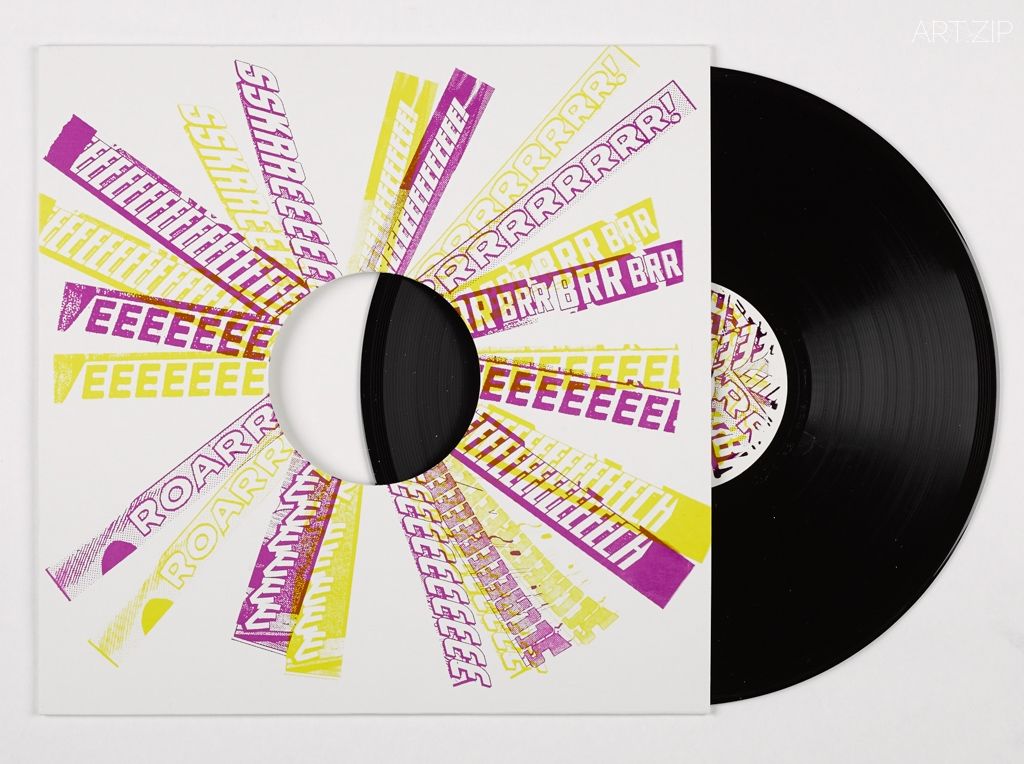
Christian Marclay: Special limited edition of LP records. Pressed and released by The Vinyl Factory and printed by Coriander Studio, 2015
ART.ZIP: Vinyl has such a long history over 100 years, its popularity and significance have changed a lot too. What are the strategies of Vinyl Factory in the digital age?
SB: For us, the future was always a combination of the incredible analogue format, and the craft that went into that, the skill, the passion, the precision engineering, the experience, married with the fact that you have this incredible audio-visual object that was more than just a digital file. However it wouldn’t exist as a business without digital, what the Internet and what digital provides you with are many things but primarily with the opportunity to engage with a worldwide audience. Prior to digital you would have had to somehow let people around the world know you exist, through marketing and advertising.
Now we have the Vinyl Factory website as well, in the same way that we started with FACT, the idea is to have this global portal with more people, more interest in vinyl and audio-visual art and how you engage with that. Our team recently produced a film at the pressing plant, a film that shows how a vinyl record is made in 60 seconds, because a lot of people are watching films on their phones, on Snapchat or on Facebook. Digital is getting faster and faster, you have to adapt to the digital without changing the vinyl. This film got 1million likes, and the view on YouTube are going up and up. It is the two working together.
ART.ZIP: 黑膠唱片的歷史已逾百年,它的流行度和重要性也轉變了很多。在數字化時代裡,Vinyl Factory的應對策略是什麼?
SB: 對我們來說,未來肯定不僅僅是一個數碼文件,它應該是一種結合了先進的模擬格式、技術、熱情以及精湛工藝並帶來體驗的綜合型視聽產物。但是如果沒有數碼的支持,企業也很難立足,數碼和互聯網給我們帶來了許多機會,首要的便是全世界人民都有機會接觸和參與。在沒有數碼和互聯網之前,企業需要通過市場營銷和廣告讓全世界的人知道你的存在。
現在Vinyl Factory有自己的網站,就如我們開始創辦《事實(FACT)》雜誌一樣,為的就是開放一個全球性的門戶吸引更多人參與到黑膠唱片和視聽藝術的領域。我們的團隊最近在黑膠製造廠拍攝了一段影片,這段僅有60秒的短片展示了黑膠的製作過程,為的就是配合現代人在手機、Snapchat或在Facebook上的觀影習慣。數碼讓世界變得越來越快,你得保證在不改變黑膠的前提下適應這個時代。這個視頻目前已經有一百萬的點讚,在YouTube上的觀看次數還在不斷增加。所以我們的策略就是兩者的結合。
ART.ZIP: What do you think about the future of the Vinyl Factory? Has the Vinyl Factory got any plans for branching out further?
SB: Well, the future for us is to continue to use 180 The Strand, use that opportunity to create an immersive experience. There are different opportunities to see how digital and physical can work together. A lot of the shows, they are creating something that you can’t necessarily experience digitally, whether it’s 5 screens, 10 screens, the sound setup or a 3D film, it has to be a distinct experience. I think there will be more opportunity in the way we use digital so I think that will continue to be exciting.
In terms of vinyl, it feels that the market continues to grow. It feels like lots of younger people are buying records and they don’t have collections. It’s even surprising to us. There are more records being released each year, more pressing plants being set up and the culture is continuing to grow, and we want to be at the heart of that. The Vinyl Factory website is truly important for us, a voice in a way, like FACT, it has become for electronic music. The Vinyl Factory will become for voice for vinyl culture globally, we will just be one business within many business but if we can have a portal, a website that connects with the global community that is exciting for us. Bizarrely there was a point in the 1970’s where there were 27 or 28 vinyl pressing plants in the world, and they all went apart from the one in the UK. Now ironically people are scrambling to get hold of them, you could never have imagined that at the time.
ART.ZIP: Vinyl Factory未來有什麼擴張計劃嗎?
SB: 我們會繼續使用河岸街180號的場地,為觀眾創造浸入式的體驗。還有很多機會來實現數碼與實體結合的可能性。許多展覽為的就是創造一些超越數碼的體驗,無論是5屏、10屏放映,聲效設計,3D電影,它們創造的必須是一個獨特的體驗。我想我們還能創造出更多可能,所以我對未來充滿期待。
至於黑膠唱片,市場仍然在持續升溫。現在有許多年輕人也開始購買黑膠了,他們甚至都還沒有收藏的習慣呢,這挺令人驚訝的。如今,黑膠唱片的發行量在逐年遞增,黑膠工廠也是,黑膠文化也在蓬勃發展,我們希望能成為中堅力量。Vinyl Factory的網站對我們意義重大,它是一個發聲的渠道,就像雜誌《事實(FACT)》,它如今已經成為了一本專做電子音樂的刊物。Vinyl Factory將繼續為全球黑膠文化發聲,我們只是眾多產業中的一環,但如果我們建立的這個門戶、這個網站,能讓全球社區聯繫起來是非常振奮人心的事。奇怪的是,在上世紀70年代,全球有27、28個黑膠工廠,但後來僅剩下一家英國的EMI。但你瞧現在,人們都在爭先恐後地想要重建黑膠工廠,這在當年是難以想像的。
.
More about Vinyl Factory
More about FACT magazine
www.factmag.com
Upcoming Exhibition
The Infinite Mix
A Hayward Gallery off-site exhibition presented
in collaboration with The Vinyl Factory
The Store, 180 The Strand
September 9th – December 4th 2016
Tuesday to Saturday, 12pm – 8pm
Sunday, 12pm – 7pm
Free entry
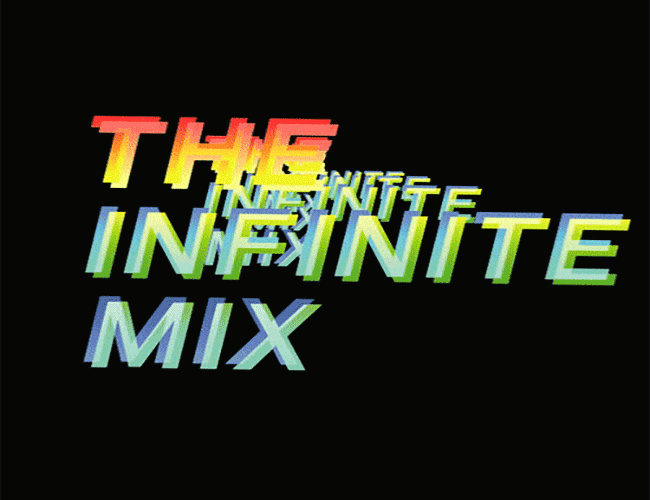
The Infinite Mix

